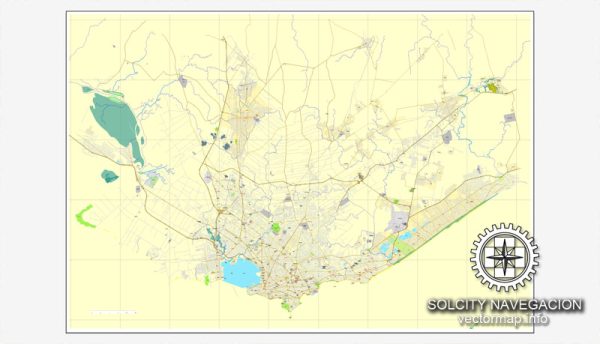Montevideo, the capital and largest city of Uruguay, is situated on the country’s southern coast along the Rio de la Plata. The city is known for its rich cultural heritage, vibrant neighborhoods, and diverse architecture. While Montevideo may not be as crisscrossed with waterways and bridges as some other cities, it does have some notable features.
Waterways:
- Rio de la Plata: Montevideo lies along the northern shore of the Rio de la Plata, a wide estuary formed by the convergence of the Paraná and Uruguay rivers. While not a traditional waterway within the city, the Rio de la Plata is a prominent geographical feature and a major influence on the city’s culture and lifestyle.
Bridges:
- La Barra:
- This is a relatively new and modern bridge that connects the Rambla of Montevideo with the area of Punta Ballena and Punta del Este. While not directly in Montevideo, it’s a significant bridge in the vicinity.
Main Streets and Avenues:
- 18 de Julio Avenue (Avenida 18 de Julio):
- Often considered the main avenue in Montevideo, Avenida 18 de Julio runs through the heart of the city. It’s a bustling street lined with shops, cafes, and cultural attractions.
- Rambla of Montevideo:
- The Rambla is a long coastal avenue that stretches for approximately 13 miles along the Rio de la Plata. It offers picturesque views of the water and is a popular spot for walking, jogging, and cycling.
- Bulevar Artigas:
- Another important avenue, Bulevar Artigas, is named after national hero José Gervasio Artigas. It traverses the city and is known for its green spaces and monuments.
- Avenida Italia:
- This avenue is significant for its commercial and residential areas and serves as a major route for transportation.
- Avenida 8 de Octubre:
- Avenida 8 de Octubre is a key thoroughfare in Montevideo, connecting different neighborhoods and commercial areas.
- Avenida General Rivera:
- This avenue is notable for its role as a major transportation route and its proximity to various city landmarks.
- Avenida Luis Alberto de Herrera:
- Connecting different parts of the city, this avenue is known for its commercial and business establishments.
While Montevideo may not be known for an extensive network of bridges and waterways like some other cities, its charm lies in its wide boulevards, coastal areas, and vibrant neighborhoods. The city’s layout reflects a mix of historical and modern influences, providing residents and visitors with a diverse urban experience.


 Author: Kirill Shrayber, Ph.D.
Author: Kirill Shrayber, Ph.D.